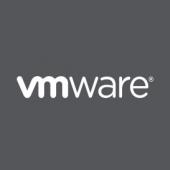Cloud Computing: Automation is Essential
Hybrid clouds demand a finely tuned automation platform for smooth deployment and operation of applications, while avoiding human error.
June 29, 2020

Today, cloud computing is a fixture in every IT shop. Cloud-based applications bring proven value: reduced time-to-market, enhanced scalability, agile development, and embedded redundancy. Cloud services are mature, in the sense that a plethora of world-class cloud platforms, facilities, and software-as-a-service offerings give you unprecedented freedom of choice. The question you, as an IT manager, are likely asking today is no longer “Can we do this in the cloud?” but “Which clouds do we use, and how do we manage them?”
A vast field of choices isn’t the only challenge you face. Management requires that you deploy cloud apps while maintaining security and auditability, meet all governance rules -- and with disaster recovery and business continuity built in. Moreover, while cloud vendors provide plenty of choice, they deliver very little interoperability unless you marry yourself to a single cloud architecture -- and there goes your freedom of choice.
Software-defined networking to the rescue
The key to keeping cloud choices open while achieving all of its benefits, and overcoming its deficits, is automation. Constructing application infrastructure -- the compute, security, network, and interconnect elements that make applications fly -- is a complex process that determines when, where and what applications and services you can realistically deploy.
Executing this process manually slows time to market, reduces ongoing productivity, and ultimately costs more. And it also introduces potential human error, which can add even more costs in troubleshooting and remediation.
As a result, you miss opportunities to differentiate your business from competitors. Fortunately, you can automate the application deployment process, through software-defined networking (SDN). SDN lets you deploy applications faster, while simultaneously reducing human error -- the major cause of application outages. Done correctly, SDN also brings you improved visibility into application performance through a slew of real-time and historic analytics.
The hybrid cloud
One factor complicating all application management tasks, including automation, is that not everything lives in the cloud. Nor can it. Yes, the cloud lets you quickly meet line-of-business demands. But a fair amount of computing still must live “back at the shop”, for either legacy, governance, or security reasons. Hence most organizations must manage a combination of public cloud and data center/private cloud resources, collectively termed the hybrid cloud.
This means effective SDN must encompass the entire hybrid cloud: all platforms, all compute engines, all data pipes, all failover processes, and all security mechanisms. As with cloud product options, there are many choices for SDN. Some consolidate routing and switching components. Some propagate security policies. Some manage data paths.
But the best SDN is the one that starts with the application and its needs, and delivers a cohesive control plane across compute engines, network elements, security policies, redundancy processes, and yes, clouds. Today’s applications are already virtualized containers, readily amenable to automation.
Because VMware is already poised at the application interface in thousands of enterprises, VMware is uniquely positioned to extend its capabilities to the hybrid cloud. Application-oriented SDN extends this automation to the entire application data path, giving you comprehensive, end-to-end control of the underlying hardware.
Single copy of the truth
SDN collects all the control points of the application data path and organizes them into a single pane of glass interface, giving you a cohesive view of the true application state at all times. Compared to traditional management toolsets, which collect data periodically and produce summary reports, SDN shows you the real-time effects of network changes, and lets you record, verify, and audit every application change and provisioning event.
A key aspect of cloud automation is blueprinting. A cloud blueprint packages all the specifications for a specific application deployment. This eliminates the configuration sprawl that cripples traditional network administration, where IT workers must contend with “multiple copies of the truth”: disjointed firewall policies, broken routing tables, and obsolete access control lists. When you retire an application, all of its infrastructure components are de-provisioned as well, preventing the “bit rot” common to device-defined networks. As an added benefit, blueprints can be published to a service catalog to share with anyone in your organization.
SDN also simplifies moving applications between private-, public-, and multi-clouds, by automating the relocation of each control element along with the application workload. Even as apps move between clouds, scaled up and down, and retired, their policies automatically move, scale, and retire in lockstep.
VMware enables these capabilities through an integrated solution of vRealize Automation (modern infrastructure automation platform) and NSX Data Center (SDN platform), providing complete lifecycle automation in a consistent fashion across apps, regardless of their architecture or workload type.
Ready to buy
As an enterprise IT professional, you’ve seen the evolution of applications from physical to virtual machines, and you already recognized the value and agility of cloud services. The next evolution is in automation, to ensure consistent application deployment, life-cycle management, policy-based administration, and improved analytics. To unlock the promise of agility through automation, you need to invest in tools and skills aimed at a software-driven management of the hybrid cloud. The best tools help speed infrastructure and application provisioning while ensuring standardized environments and avoiding configuration drift, key elements to achieving that all-important single copy of the truth. With VMware Network Automation, you can establish consistent infrastructure and operations while reducing labor, enabling you to realize productivity gains, greater operational efficiency and rapidly deploy your apps to get to market faster. You’re now well positioned to make effective buying decisions for your software-defined future.
About VMware
VMware, a leading innovator in enterprise software, powers the world’s digital infrastructure. Our solutions form a flexible, consistent digital foundation that enables technology-driven transformation without disruption.
About the Author
You May Also Like




